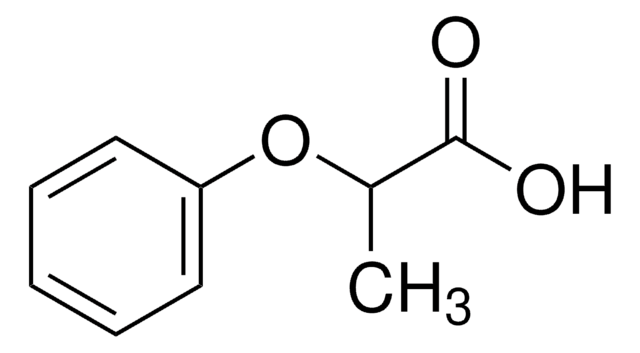209309
Iron
powder, −325 mesh, 97%
Synonyme(s) :
Fe
About This Item
Produits recommandés
Niveau de qualité
Pureté
97%
Forme
powder
Pertinence de la réaction
core: iron
reagent type: catalyst
Résistivité
9.71 μΩ-cm
Taille des particules
−325 mesh
Point d'ébullition
2750 °C (lit.)
Pf
1535 °C (lit.)
Densité
7.86 g/mL at 25 °C (lit.)
Chaîne SMILES
[Fe]
InChI
1S/Fe
Clé InChI
XEEYBQQBJWHFJM-UHFFFAOYSA-N
Catégories apparentées
Application
Iron can also be used:
- For the removal of arsenate from water.
- To synthesize Fe(III) iodide catalyst for thioglycosylation of peracetylated saccharides.
- As a catalyst for the graphitization for microscale radiocarbon analysis of small samples.
- For the removal of nitroaromatic pesticides by reduction.
Forme physique
Mention d'avertissement
Warning
Mentions de danger
Conseils de prudence
Classification des risques
Flam. Sol. 2 - Self-heat. 2
Code de la classe de stockage
4.2 - Pyrophoric and self-heating hazardous materials
Classe de danger pour l'eau (WGK)
nwg
Point d'éclair (°F)
69.8 °F
Point d'éclair (°C)
21 °C
Certificats d'analyse (COA)
Recherchez un Certificats d'analyse (COA) en saisissant le numéro de lot du produit. Les numéros de lot figurent sur l'étiquette du produit après les mots "Lot" ou "Batch".
Déjà en possession de ce produit ?
Retrouvez la documentation relative aux produits que vous avez récemment achetés dans la Bibliothèque de documents.
Les clients ont également consulté
Articles
An article concerning self-propagating reactions induced by mechanical alloying, presented by Sigma-Aldrich.com.
Notre équipe de scientifiques dispose d'une expérience dans tous les secteurs de la recherche, notamment en sciences de la vie, science des matériaux, synthèse chimique, chromatographie, analyse et dans de nombreux autres domaines..
Contacter notre Service technique





